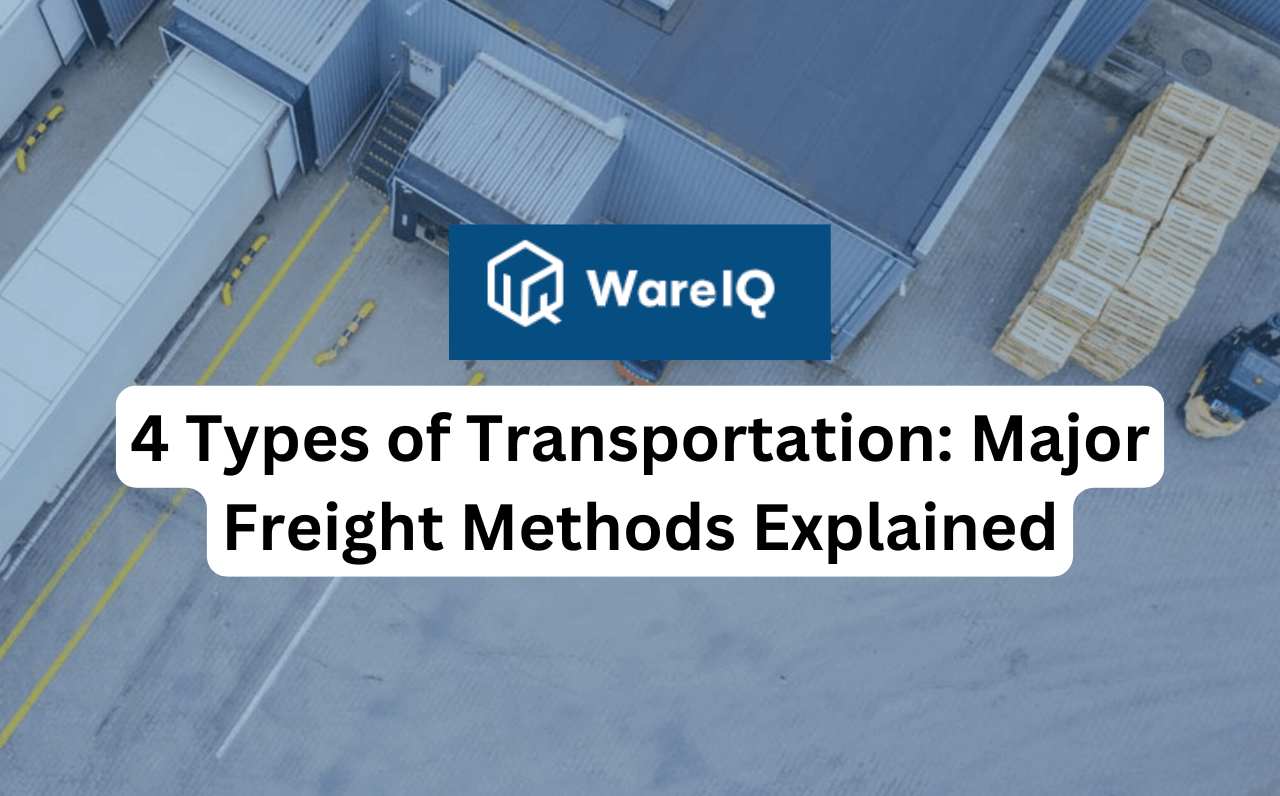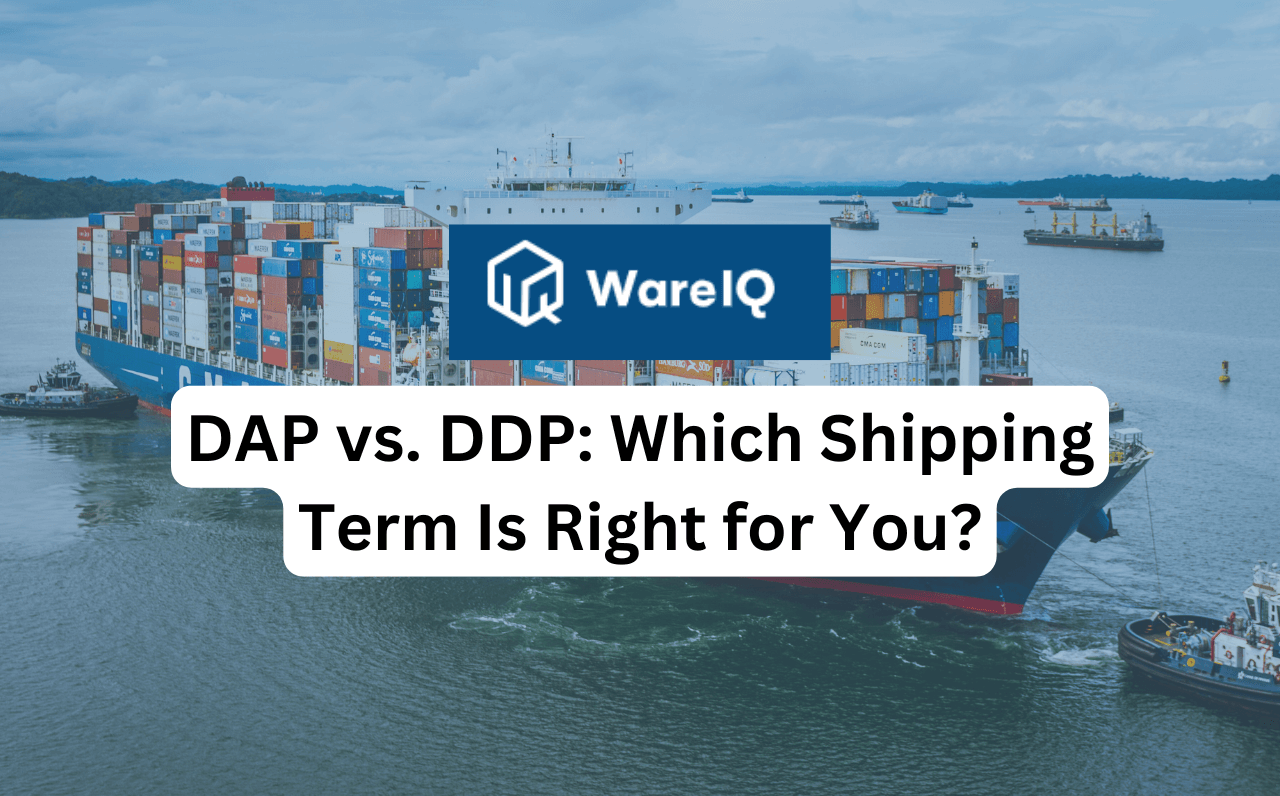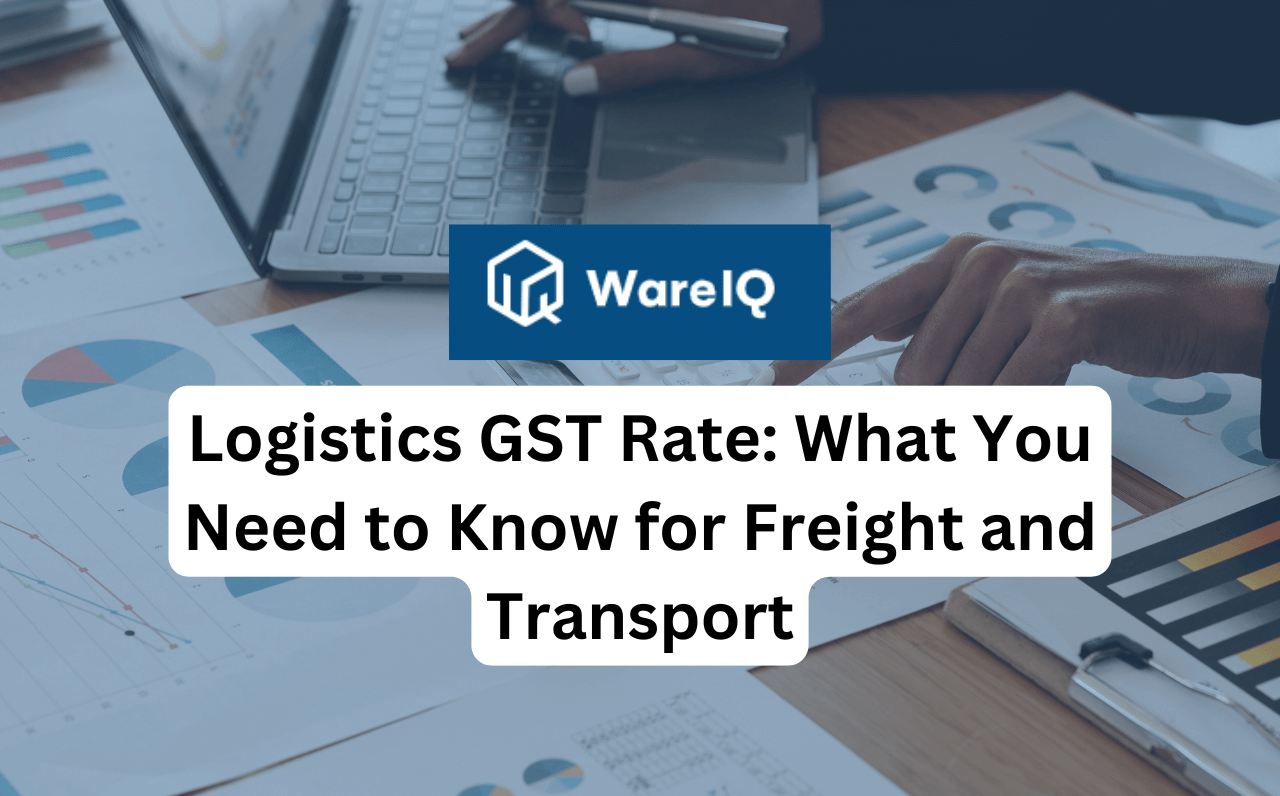Types of Products in E-Commerce: A Comprehensive Guide
Understanding the types of products in e-commerce is essential for sellers looking to optimise their strategies and gain market share. According to Statista, global e-commerce sales reached $5.8 trillion in 2023 and are projected to soar to $8 trillion by 2027, highlighting the immense potential of the online marketplace. This rapid growth is driven by a diverse range of products catering to both consumers and businesses. Whether you're launching a new store or scaling an existing one, choosing the right product category can significantly influence your success.This guide provides a detailed breakdown of the types of products in e-commerce, focusing on the two major categories: consumer products and business products (industrial products). We define each subtype, explain their significance, and highlight their unique benefits and applications. Additionally, we’ll show how WareIQ’s tech-driven fulfilment solutions can streamline logistics for all different types of products, helping your business thrive.What Are the Types of Products in E-Commerce?E-commerce products are broadly divided into two primary categories: consumer products and business products (industrial products). These categories are further segmented based on their purpose, buyer behaviour, and distribution channels1. Consumer ProductsConsumer products refer to goods purchased by individuals or households for personal use, and they form the backbone of most e-commerce platforms like Amazon, Flipkart, and Shopify. These products cater to a wide range of everyday needs and lifestyle preferences, making them essential for online retail success.In the world of e-commerce and retail, consumer products are typically classified into four main types based on consumer buying behaviour:Convenience ProductsShopping ProductsSpecialty ProductsUnsought ProductsLet’s explore each type of consumer product in detail to gain deeper insights and understand how they influence e-commerce strategies.a) Convenience ProductsConvenience products are low-cost, frequently purchased items that require minimal effort or decision-making. Consumers buy these routinely, often impulsively, due to their accessibility and necessity.These products appeal to a broad audience, from busy professionals to families seeking quick solutions for daily needs. Their unique selling proposition (USP) is affordability and availability, making them ideal for repeat purchases. In e-commerce, convenience products drive high sales volumes through subscription models and fast delivery. Benefits include consistent demand, low marketing costs due to brand familiarity, and scalability for sellers leveraging bulk sales.b) Shopping ProductsShopping products are goods that consumers research and compare before purchasing, often involving higher costs and less frequent buys. Buyers evaluate quality, price, and features to make informed decisions.These attract discerning shoppers, such as tech enthusiasts or fashion-conscious individuals, who prioritise quality and value. Their USP lies in differentiation through design, functionality, or brand reputation. In e-commerce, detailed product listings, customer reviews, and comparison tools boost conversions. Benefits include higher margins, customer loyalty through quality offerings, and opportunities for upselling related items.c) Specialty ProductsSpeciality products are unique or high-value items with strong brand loyalty, where consumers are willing to invest significant effort or money to acquire them. These are often associated with exclusivity or prestige.Targeted at niche audiences like luxury shoppers or collectors, speciality products thrive on their exclusivity and premium branding. Their USP is the emotional or status-driven appeal, making them less price-sensitive. In e-commerce, they benefit from storytelling, high-quality visuals, and exclusive launches. Sellers enjoy high profit margins, strong customer retention, and the ability to build a loyal community around the brand.d) Unsought ProductsUnsought products are goods consumers don’t actively seek or think about until a specific need arises, often due to a lack of awareness or situational triggers.These appeal to situational buyers, such as those needing emergency supplies or specialised services. Their USP lies in addressing urgent or niche needs, often through targeted marketing. In e-commerce, strategies like retargeting ads, discounts, or educational content drive sales. Benefits include untapped market potential, the ability to create demand through awareness, and opportunities to cross-sell complementary products.Here is a quick recap of consumer product types:Type of Consumer ProductDefinitionExamplesE-Commerce StrategyConvenience ProductsLow-cost, frequent buys with minimal effortToothpaste, snacksSubscription models, fast deliveryShopping ProductsResearched purchases with moderate costClothing, electronicsDetailed listings, reviewsSpecialty ProductsUnique, high-value items with brand loyaltyLuxury watches, designer bagsExclusive branding, premium experienceUnsought ProductsGoods not actively sought until neededInsurance, emergency kitsTargeted ads, discounts2. Business Products (Industrial Products)Business products, also known as industrial products, are goods and services purchased by organisations for operational, production, or resale purposes. Unlike consumer products, these are designed for business use, emphasising functionality and efficiency in B2B e-commerce. They are organised into three main categories: materials and parts, capital items, and supplies and services, covering six subtypes to address varied industrial needs. Below, each subtype is explained simply and concisely, ensuring clarity for beginners and optimising for featured snippets.a) Materials and PartsThis category includes goods that form part of a final product, either as raw inputs or processed components, essential for manufacturing and production.Raw MaterialsRaw materials are unprocessed or minimally processed resources used to create finished goods, forming the foundation of manufacturing. Industries such as textiles, food production, or construction depend on raw materials like cotton, wheat, or steel. Their core value lies in consistent quality and availability, ensuring uninterrupted production. In e-commerce, bulk ordering and reliable supply chains are crucial. Sellers benefit from steady industrial demand, long-term contracts, and scalability through high-volume sales.Component PartsComponent parts are finished or semi-finished items integrated into larger products during assembly, enhancing their functionality. Automotive or electronics industries rely on parts like tyres, batteries, or microchips. Their primary strength is precision and compatibility with final products. In e-commerce, quality certifications and fast delivery build trust. Sellers gain from recurring orders, higher margins due to specialised production, and consistent manufacturer demand.b) Capital ItemsCapital items are durable, high-value assets that support long-term production or operational processes, often requiring significant investment.Major EquipmentMajor equipment refers to heavy machinery and tools used in large-scale production by industries like manufacturing or construction. Examples include industrial robots and assembly line machines. Their value lies in durability and productivity, driving operational efficiency. In e-commerce, detailed specifications and financing options attract buyers. Sellers benefit from high-value sales, long-term client relationships, and opportunities to offer maintenance services.Accessory EquipmentAccessory equipment includes smaller, less costly tools or devices that support business operations, such as computers, shelving, or marketing tools. Businesses across sectors use these for product development or administrative tasks. Their appeal lies in affordability and versatility, enhancing daily operations. In e-commerce, bulk discounts and quick delivery drive sales. Sellers gain from frequent purchases, low marketing costs, and the ability to bundle with other products.c) Supplies and ServicesThis category includes consumable items and intangible offerings that support routine business functions, typically purchased regularly.Operating SuppliesOperating supplies are low-cost, consumable items used daily for maintenance or operational support, such as paper, pencils, or cleaning products. Businesses of all sizes rely on these for seamless functioning. Their value lies in cost-effectiveness and convenience, ensuring smooth operations. In e-commerce, subscription models and bulk pricing boost sales. Sellers benefit from recurring revenue, minimal marketing efforts, and opportunities to pair with complementary items.Business ServicesBusiness services are intangible solutions, such as logistics, consulting, or software, tailored to improve business efficiency or compliance. Companies across industries use these to streamline processes. Their strength lies in expertise and customisation, delivering measurable results. In e-commerce, clear descriptions and case studies foster trust. Sellers benefit from high margins, subscription-based revenue, and cross-selling potential.Type of Industrial ProductDefinitionExamplesE-Commerce StrategyRaw MaterialsUnprocessed resources for productionCotton, wheat, steelBulk pricing, reliable supplyComponent PartsFinished parts for assemblyTires, batteries, microchipsQuality certifications, fast deliveryMajor EquipmentHeavy machinery for productionIndustrial robots, machinesFinancing, detailed specsAccessory EquipmentSupportive tools for operationsComputers, shelvingBulk discounts, quick deliveryOperating SuppliesConsumables for daily usePaper, cleaning productsSubscriptions, bulk pricingBusiness ServicesIntangible operational supportLogistics, consultingClear terms, case studiesWhy Does Understanding Product Types Matter in E-Commerce?Aligning your business with the right types of products shapes your marketing, pricing, and logistics strategies. For instance, convenience products thrive on fast delivery and affordability, while speciality products demand premium branding. Similarly, industrial products require reliable supply chains and quality assurance to meet B2B expectations. By understanding these distinctions, you can target the right audience and optimise operations.Moreover, product categories influence inventory management and fulfilment needs. High-turnover consumer goods require robust stock planning, while capital goods need secure storage and transport. Choosing the right products ensures you meet customer expectations while maintaining profitability.Also read - Difference Between Product Mix and Product LineProducts vs. Services in E-CommerceIn e-commerce, products and services cater to distinct customer needs, shaping unique business strategies. Understanding their differences helps sellers optimise offerings and enhance customer satisfaction.AspectProductsServicesDefinitionTangible goods purchased for personal or business use, such as clothing or machinery.Intangible offerings providing value through expertise, such as logistics or consulting.ExamplesToothpaste, laptops, industrial robots, stationery.Warehousing, software solutions, marketing consulting, delivery services.Customer AppealPhysical utility, durability, or convenience drives demand.Customisation, expertise, or efficiency solves specific needs.E-Commerce StrategyFocus on fast delivery, detailed listings, and quality assurance.Emphasise clear descriptions, case studies, and subscription models.How to Choose the Right Product Type for Your E-Commerce Business?Selecting the ideal types of products involves aligning your offerings with market trends and operational capabilities. Here’s a step-by-step guide:Research Market TrendsUse tools like Google Trends or marketplace analytics to identify high-demand consumer product lists or industrial needs. For instance, eco-friendly convenience products are gaining traction due to the rising interest in sustainability trends.Define Your Target AudienceStart by determining whether you’re catering to B2C (individual shoppers) or B2B (businesses). B2C buyers tend to prioritise convenience and variety, while B2B buyers focus on reliability and consistency, especially when it comes to industrial product requirements. For example, B2C shoppers may be more inclined toward trendy and seasonal products, whereas B2B clients are usually looking for consistent bulk supplies.Assess ProfitabilityConsider the profit margins of your selected product category. Speciality products often come with higher margins but lower sales volume, while convenience products rely on quick, repeated turnover. For example, selling luxury goods demands strong, premium branding, whereas daily essentials thrive on selling large volumes consistently.Ensure Logistics CompatibilityIt's important to align with a fulfilment provider that can support the specific logistics your product category requires. Whether it's cold storage for perishable goods or secure transport for capital equipment, the right partner makes a difference. For example, WareIQ’s pan-India logistics network is equipped to support a wide range of product needs effectively.Suggested - Product Packaging: Best Practices for Small BusinessesStreamline Your E-Commerce Operations with WareIQ’s Product-Focused Fulfillment SolutionsManaging different types of products in e-commerce demands a logistics partner that understands diverse needs. WareIQ, a Y Combinator-backed e-commerce fulfilment platform, offers tailored solutions to handle both consumer products and business products efficiently, ensuring seamless operations and customer satisfaction.WareIQ’s full-stack fulfilment services include:Pan-India Fulfilment Network: Access 12+ cities for faster delivery of convenience products and shopping products across 27,000+ pin codes.AI-Driven Inventory Management: Inventory LogIQ optimises stock for high-turnover types of consumer goods and ensures precise placement for speciality products.Multi-Channel Integration: Connect with D2C platforms (Shopify, WooCommerce) and marketplaces (Amazon, Flipkart) to manage different products centrally.Specialised Logistics: From cold storage for perishables to secure transport for capital goods, WareIQ meets marketplace SLAs like Seller Flex and FAssured.Seller Enablement: Simplify GST compliance, catalogue management, and APOB/PPOB registrations for all product categories.With WareIQ, e-commerce brands can scale effortlessly, delivering exceptional experiences across types of products while maintaining cost efficiency and compliance.ConclusionMastering the types of products in e-commerce, ranging from consumer products like convenience and speciality goods to business products like raw materials and capital goods, enables sellers to align their strategies with customer needs and market trends. Each product category demands tailored approaches to marketing, pricing, and logistics to achieve success. By selecting the right products and leveraging WareIQ’s advanced fulfilment solutions, businesses can streamline operations, ensure rapid deliveries, and gain a competitive edge in the $5.8 trillion e-commerce market. Begin optimising your product offerings today with WareIQ’s tech-driven platform.Suggested - Types of Goods: From Consumer Products to Industrial GoodsFAQs About Types of ProductsWhat are consumer products in e-commerce?Consumer products are goods bought for personal use, including convenience, shopping, speciality, and unsought products.What are business products?Business products, or industrial products, are purchased for operational or resale purposes, such as raw materials, parts, and capital goods.What are examples of convenience products?Toothpaste, snacks, and soap are convenience products bought frequently with minimal effort.How does WareIQ support different product types?WareIQ offers AI-driven inventory management, pan-India fulfilment, and multi-channel integration to handle diverse consumer and business products.Why is product categorisation important?It enables targeted marketing, optimised pricing, and efficient logistics tailored to each product type’s unique needs.









